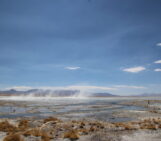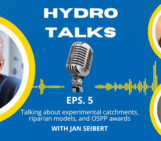
“What failure prepared you for later success?” Tim Ferriss often asks this question to the high-performing guests on his podcast, giving them the opportunity to reflect on how setbacks have shaped their journey. Whether the guest is a leader in business, medicine or science, their answers often share a common theme: failure is not only inevitable, but essential. These moments of struggle not only propelled them forward, but sharing them also provided valuable lessons for others.
This perspective resonates deeply with the scientific process. Trial and error are at the heart of discovery, yet science is often presented as a linear narrative of success. Behind the polished journal articles and confident conference presentations, however, lies a messier reality. Failed experiments, negative results and statistical dead ends are all natural steps on the path to understanding. But these stories rarely make it into the spotlight.
In the geosciences, as in many disciplines, the pressure to publish positive results reinforces this culture of silence. Studies that confirm accepted theories or produce statistically significant results are far more likely to be published, while experiments that fail or tests of innovative ideas that fall flat are relegated to the “file drawer”. This is a problem. If unpublished failures remain hidden, others risk wasting time and resources repeating the same mistakes, starting from scratch rather than building on previous attempts.
Share your failures!
Early career researchers in particular can find this culture discouraging. Looking at the spotless CVs of senior researchers, it’s easy to assume that their paths have been smooth and free of mistakes. When these early-career scientists experience their own setbacks, they may question their abilities or even their place in the field. But failure is not a sign of inadequacy – it is a cornerstone of the scientific method, a critical part of how knowledge advances.
At the upcoming EGU General Assembly 2025, we want to invite you to do something a bit unsual at large international conferences, where everyone’s keen to show off their successes. Please share mistakes as well as ideas that didn’t work out. What did you take away from that experience? Share your story during our session EOS4.8 “BUGS: Blunders, Unexpected Glitches, and Surprises”



